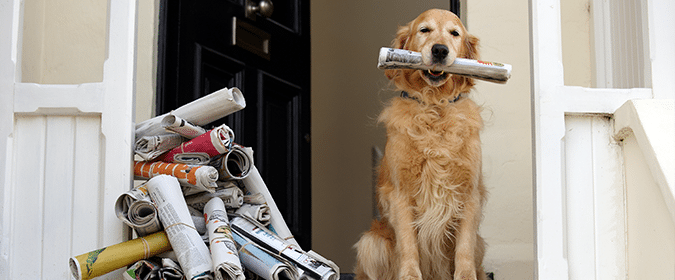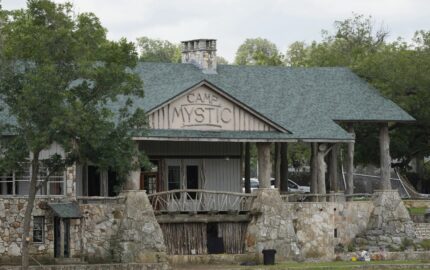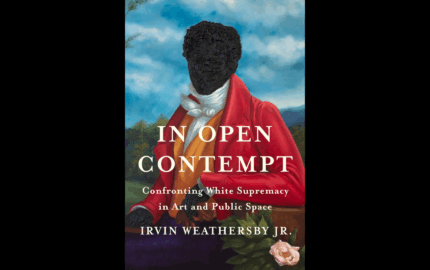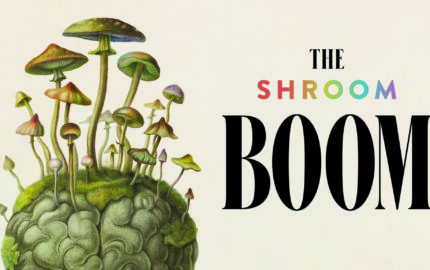The self-checkout line at my funky neighborhood grocery was wide open, but I waited for the old-fashioned line, with a checker and a bagger. I don't like to weigh my own Honeycrisps any more than I've ever learned to like pumping my own gas.
Snobbery? Maybe a little. But even 40 years after service stations eliminated the service, I miss chatting with the young and old men who pumped my gas and squeegeed my windshield and, on a slow day, offered to check the oil. I liked knowing they had jobs (I bought my first car deep into the oil-embargo recession of the mid-1970s, when unemployment numbers were steep) and that I was adding a few coins to their pockets. I took pleasure in addressing them by the names stitched on their shirt pockets, and talking to them as if we knew each other a bit. As a young reporter, I was probably practicing my interview skills and turning them into tiny, nonscientific focus groups: What's new in the neighborhood? Did you see the story about oil prices? How's it going in school?My neighborhood grocery is like that.
At least on good days. It's part of a quality local chain, but this store is old and small, nestled in a mash-up part of central Seattle not far from my house. House-rich professionals jostle the narrow aisles with people checking for coupon deals. LGBTQ+ folks wander through in all manner of dress, weaving around seniors with walkers or stopping a moment to grab something for them off a high shelf. There are shoppers struggling with drugs and shoppers struggling with homelessness. In super-white, high-tech Seattle, this is where I plug into a pocket of more relevant diversity.
So I don't mind waiting in line. Especially if I can get checked out by Liz. I'll wave other people ahead of me just to land at her conveyor belt, where I am treated to her latest rant about work, family and politics. She's blister-fast with her scanner, never has to look up a product price, notices every missed discount and keeps the baggers on task.
But Liz was on vacation after three months without a day off, many of them working double shifts. The checker was new to me, and not terribly attentive; I had to remind him that the flowers were on sale, that there was a box of wine in the bottom of my cart, and could he please scan my rewards card? I have long been in the habit of bringing my own bags — out here on the Left Coast, you are scowled at if you don't— but because of Covid, you now have to bag them up yourself. So the bagger — a young man who stood at the end of the belt with the slouchy grace of an athlete — stepped back, folded his arms, and talked to the checker while I jammed my groceries together, trying not to crush the cherries.
All fine. Just another day in the jumbled city. Until this exchange:
I keep my mouth shut about a lot of things. Despite a life as a journalist, I remain my mother's daughter: Mind your own business. Don't go poking. If I can't report something out myself, I don't have much use for ill-informed opinions — even when they're mine.
But I do know some things. The public service function of good, local newspapers is among them.
As I tucked a block of cheddar into my bag, I looked at the tall, young bagger — each of us behind our masks — and asked, "You don't think that will be on the news?"
He shrugged with bored certitude: "No way."
"Hmmm." I said. "It was on the front page of the Seattle Times this morning, and all over the radio."
He paused, just a beat, then jumped in to ask how the cop died. Traffic stop? Domestic?
"It apparently started as a traffic stop," I said. "The shooter is being charged with murder."
He perked up a bit, alert now: "What happened?"
Now it was my turn to pause. And then: ""You can read about that yourself. There are a few newspapers on the rack behind you. Want me to buy you one?"
I swear to Guttenberg that the kid blushed behind his mask. I couldn't help myself, so as I hoisted my bags, I added: "He was a local guy, from Bothell. Just became a cop last year. Sounds like a nice young man. But you can read that for yourself."
I wish I could say I came away from this encounter feeling proud. Instead, I was deflated. It was another tough week of news for the news industry — and especially for local newspapers.
Industry watcher Ken Doctor has followed the bankruptcy of McClatchy, a respected chain that started in 1857 in Sacramento, California, through his Newsonomics column on Nieman Lab. This week, in his report about the winner of a contested and discouraging auction for the chain, Doctor said bluntly: "... down the road it may look like a retrospective tipping point in the disappearance of the American daily press." Rick Edmonds of the Poynter Institute was slightly less glum. He noted that the auction winner, hedge fund Chatham Asset Management, has taken a light hand with its other newspaper acquisitions: "...my guess is that deep cuts or other radical action once it owns the company are not likely."
I would take more heart from that if newspapers had not already been gutted beyond bone to marrow. In the last decade, half of newsroom jobs have been wiped out. News deserts — entire communities without any local press presence — are popping up faster than the horsetails in my yard. The Poynter Institute's Kristen Hare keeps up, as best she can, with a daily list of newsroom layoffs and newspaper closures. Just this past week, Nieman Lab reported publication of the last Monday morning print newspaper in Wyoming. "Ghosting the News," by New York Times media columnist Margaret Sullivan, is a sure-bet topic among current and former newshounds as they seek solace together in ... late-night Zooms?
Some of the pundits argue that the world doesn't need newspapers; it needs journalism. I agree that how journalism is done — not how it is delivered — is paramount. (Although I fret about people who don't have broadband internet access. Do we shrug them off as remnants of yesteryear?) "Local" TV stretches over too much geography to get to the granular functions of a community. It also requires video — ideally, hot video — which you don't find at a planning commission meeting. Digital starts-ups? Still shaking out, with far fewer feet on the street than legacy newspapers once had. Micro-local sites in bigger markets tend to be so micro that they focus on a select neighborhood — not the bigger umbrella of political structures. And again, very few feet on the street.
What is lost with the implosion of local newspapers is not being replaced. Sullivan makes that clear in an interview this week with Mark Jacob at the Medill school at Northwestern University. This from the interview:
That’s not to say that a local radio reporter doesn’t do a great job or that local TV can’t do very good investigative work. But local newspapers particularly have a history of showing up at every board meeting, maybe even the committee meetings, working these sources over time, and being able to get at, through this detailed beat and local coverage, how people’s tax dollars are being spent.
Which all takes me back to the bagger at my grocery store. There was a newspaper — a damn good one, despite a staff that's been cut by more than half — five steps away. Yet he stood, arms folded, and declared flat-out that the local Seattle news would never cover the death of a cop in Bothell, a couple of suburbs to the north.
I don't care if this kind of news is delivered by a newspaper. What I care about is the type of on-the-ground daily journalism that has been the central mission of local newspapers. It is requisite for a functioning democratic society. And, frankly, it is where radio, TV and the big-dog mastheads find the raw material for their reports. This type of "granular government coverage" doesn't always, or even often, include the artful narratives we celebrate at Storyboard. But with enough support, newspaper journalists can fly as high as their magazine counterparts. And when they do, it means people in local markets are exposed to the kind of immersion journalism that puts those granular info-bits into a larger human and societal context.
But what do we do when we do that work in artful ways, put it in front of people in multiple forms — and they don't even notice it? How do we reach people with important, compelling work when they have already decided it won't be there?
I was determined to come back to a touchstone of hope, without making it a false one. So here it is:
Read about Evan Brandt, the last scribbling reporter at the Pottstown Mercury in Pennsylvania. The piece, by Dan Barry of the New York Times, is a masterful profile of Brandt and more: It is a bittersweet portrait of a part of America, of American democracy, and of an essential American institution — the local newspaper. Brandt oddly gives me hope. His stubborn dedication to his work and his community is downright inspiring. If he still had a newsroom, I'd send pizza.
I told a bit of his story last weekend, when I did a Zoom keynote to a conference of journalists in Kosovo. They, too, give me hope. Ten years ago, a sharp woman took her degree from the Missouri School of Journalism, returned home to Pristina, and launched her own publication. Kosovo 2.0 has become far more than a magazine; it has become a small movement.
In speaking at her anniversary conference, I expressed sincere amazement for what they have accomplished in a country and culture where independent journalism has little foundation. I also offered them the points of light I return to when the times seem dark:
This was first published July 17, 2020, as part of the weekly Storyboard newsletter.
Snobbery? Maybe a little. But even 40 years after service stations eliminated the service, I miss chatting with the young and old men who pumped my gas and squeegeed my windshield and, on a slow day, offered to check the oil. I liked knowing they had jobs (I bought my first car deep into the oil-embargo recession of the mid-1970s, when unemployment numbers were steep) and that I was adding a few coins to their pockets. I took pleasure in addressing them by the names stitched on their shirt pockets, and talking to them as if we knew each other a bit. As a young reporter, I was probably practicing my interview skills and turning them into tiny, nonscientific focus groups: What's new in the neighborhood? Did you see the story about oil prices? How's it going in school?My neighborhood grocery is like that.
At least on good days. It's part of a quality local chain, but this store is old and small, nestled in a mash-up part of central Seattle not far from my house. House-rich professionals jostle the narrow aisles with people checking for coupon deals. LGBTQ+ folks wander through in all manner of dress, weaving around seniors with walkers or stopping a moment to grab something for them off a high shelf. There are shoppers struggling with drugs and shoppers struggling with homelessness. In super-white, high-tech Seattle, this is where I plug into a pocket of more relevant diversity.
So I don't mind waiting in line. Especially if I can get checked out by Liz. I'll wave other people ahead of me just to land at her conveyor belt, where I am treated to her latest rant about work, family and politics. She's blister-fast with her scanner, never has to look up a product price, notices every missed discount and keeps the baggers on task.
But Liz was on vacation after three months without a day off, many of them working double shifts. The checker was new to me, and not terribly attentive; I had to remind him that the flowers were on sale, that there was a box of wine in the bottom of my cart, and could he please scan my rewards card? I have long been in the habit of bringing my own bags — out here on the Left Coast, you are scowled at if you don't— but because of Covid, you now have to bag them up yourself. So the bagger — a young man who stood at the end of the belt with the slouchy grace of an athlete — stepped back, folded his arms, and talked to the checker while I jammed my groceries together, trying not to crush the cherries.
All fine. Just another day in the jumbled city. Until this exchange:
Bagger to checker: "Did you hear about the cop in Bothell?"
Checker: "What cop?"
Bagger: "He was shot to death."
Checker: "Huh. Was it on news?"
Bagger: "Oh, it won't be on the news."
Checker: "Why not?"
Bagger: "He was from Bothell. This is Seattle. The media doesn't care."
I keep my mouth shut about a lot of things. Despite a life as a journalist, I remain my mother's daughter: Mind your own business. Don't go poking. If I can't report something out myself, I don't have much use for ill-informed opinions — even when they're mine.
But I do know some things. The public service function of good, local newspapers is among them.
As I tucked a block of cheddar into my bag, I looked at the tall, young bagger — each of us behind our masks — and asked, "You don't think that will be on the news?"
He shrugged with bored certitude: "No way."
"Hmmm." I said. "It was on the front page of the Seattle Times this morning, and all over the radio."
He paused, just a beat, then jumped in to ask how the cop died. Traffic stop? Domestic?
"It apparently started as a traffic stop," I said. "The shooter is being charged with murder."
He perked up a bit, alert now: "What happened?"
Now it was my turn to pause. And then: ""You can read about that yourself. There are a few newspapers on the rack behind you. Want me to buy you one?"
I swear to Guttenberg that the kid blushed behind his mask. I couldn't help myself, so as I hoisted my bags, I added: "He was a local guy, from Bothell. Just became a cop last year. Sounds like a nice young man. But you can read that for yourself."
I wish I could say I came away from this encounter feeling proud. Instead, I was deflated. It was another tough week of news for the news industry — and especially for local newspapers.
Industry watcher Ken Doctor has followed the bankruptcy of McClatchy, a respected chain that started in 1857 in Sacramento, California, through his Newsonomics column on Nieman Lab. This week, in his report about the winner of a contested and discouraging auction for the chain, Doctor said bluntly: "... down the road it may look like a retrospective tipping point in the disappearance of the American daily press." Rick Edmonds of the Poynter Institute was slightly less glum. He noted that the auction winner, hedge fund Chatham Asset Management, has taken a light hand with its other newspaper acquisitions: "...my guess is that deep cuts or other radical action once it owns the company are not likely."
I would take more heart from that if newspapers had not already been gutted beyond bone to marrow. In the last decade, half of newsroom jobs have been wiped out. News deserts — entire communities without any local press presence — are popping up faster than the horsetails in my yard. The Poynter Institute's Kristen Hare keeps up, as best she can, with a daily list of newsroom layoffs and newspaper closures. Just this past week, Nieman Lab reported publication of the last Monday morning print newspaper in Wyoming. "Ghosting the News," by New York Times media columnist Margaret Sullivan, is a sure-bet topic among current and former newshounds as they seek solace together in ... late-night Zooms?
Some of the pundits argue that the world doesn't need newspapers; it needs journalism. I agree that how journalism is done — not how it is delivered — is paramount. (Although I fret about people who don't have broadband internet access. Do we shrug them off as remnants of yesteryear?) "Local" TV stretches over too much geography to get to the granular functions of a community. It also requires video — ideally, hot video — which you don't find at a planning commission meeting. Digital starts-ups? Still shaking out, with far fewer feet on the street than legacy newspapers once had. Micro-local sites in bigger markets tend to be so micro that they focus on a select neighborhood — not the bigger umbrella of political structures. And again, very few feet on the street.
What is lost with the implosion of local newspapers is not being replaced. Sullivan makes that clear in an interview this week with Mark Jacob at the Medill school at Northwestern University. This from the interview:
One of the things that local newspapers have done well, generally, over many decades is to do a kind of granular government coverage that we don’t see in other kinds of news media.
That’s not to say that a local radio reporter doesn’t do a great job or that local TV can’t do very good investigative work. But local newspapers particularly have a history of showing up at every board meeting, maybe even the committee meetings, working these sources over time, and being able to get at, through this detailed beat and local coverage, how people’s tax dollars are being spent.
Which all takes me back to the bagger at my grocery store. There was a newspaper — a damn good one, despite a staff that's been cut by more than half — five steps away. Yet he stood, arms folded, and declared flat-out that the local Seattle news would never cover the death of a cop in Bothell, a couple of suburbs to the north.
I don't care if this kind of news is delivered by a newspaper. What I care about is the type of on-the-ground daily journalism that has been the central mission of local newspapers. It is requisite for a functioning democratic society. And, frankly, it is where radio, TV and the big-dog mastheads find the raw material for their reports. This type of "granular government coverage" doesn't always, or even often, include the artful narratives we celebrate at Storyboard. But with enough support, newspaper journalists can fly as high as their magazine counterparts. And when they do, it means people in local markets are exposed to the kind of immersion journalism that puts those granular info-bits into a larger human and societal context.
But what do we do when we do that work in artful ways, put it in front of people in multiple forms — and they don't even notice it? How do we reach people with important, compelling work when they have already decided it won't be there?
Sometimes the only answer is the work itself
I was determined to come back to a touchstone of hope, without making it a false one. So here it is:
Read about Evan Brandt, the last scribbling reporter at the Pottstown Mercury in Pennsylvania. The piece, by Dan Barry of the New York Times, is a masterful profile of Brandt and more: It is a bittersweet portrait of a part of America, of American democracy, and of an essential American institution — the local newspaper. Brandt oddly gives me hope. His stubborn dedication to his work and his community is downright inspiring. If he still had a newsroom, I'd send pizza.
I told a bit of his story last weekend, when I did a Zoom keynote to a conference of journalists in Kosovo. They, too, give me hope. Ten years ago, a sharp woman took her degree from the Missouri School of Journalism, returned home to Pristina, and launched her own publication. Kosovo 2.0 has become far more than a magazine; it has become a small movement.
In speaking at her anniversary conference, I expressed sincere amazement for what they have accomplished in a country and culture where independent journalism has little foundation. I also offered them the points of light I return to when the times seem dark:
- There are more journalistic platforms than ever; the key is what we do on them.
- Plenty of young people still want to spend their life doing journalism. And these days, they want to do it for the right reasons.
- The requirements of 21st century depth journalism more and more requires the skills and experiences that women and minorities bring with them.
- If the world seems to have a broken heart, it also means hearts are being cracked open. And that can make them more receptive to stories of heart.
- Stories are essential to humanity. That's been true since man first took ochre to rock. It will be true when we learn to write on the stars.
This was first published July 17, 2020, as part of the weekly Storyboard newsletter.



